1964 Crossle C5-7S V8
Conceived around Ford's crossfow four, the Crossle C5 held its own amid lightweight Lotus and Lola rivals. Then this one gained a V8… Words Mark Hales. Photography Paul Harmer.
CROSSLE V8 The lightweight racer with a secret advantage
Like most notable race car builders of the British post-war new wave, Scottish-born Irishman John Crossle began by building his own because he couldn’t afford to do anything else. And like Chapman, Broadley and the rest, his first efforts were directed at the 1172 formula and the eponymous sidevalve Ford Popular engine. As the 1960s dawned, there were Crossle Mk2 and Mk3, then the Mk4 of 1961, which catered for the International Formula Junior category in which a home-tuned Anglia 105E engine and VW Beetle gearbox went behind the driver.
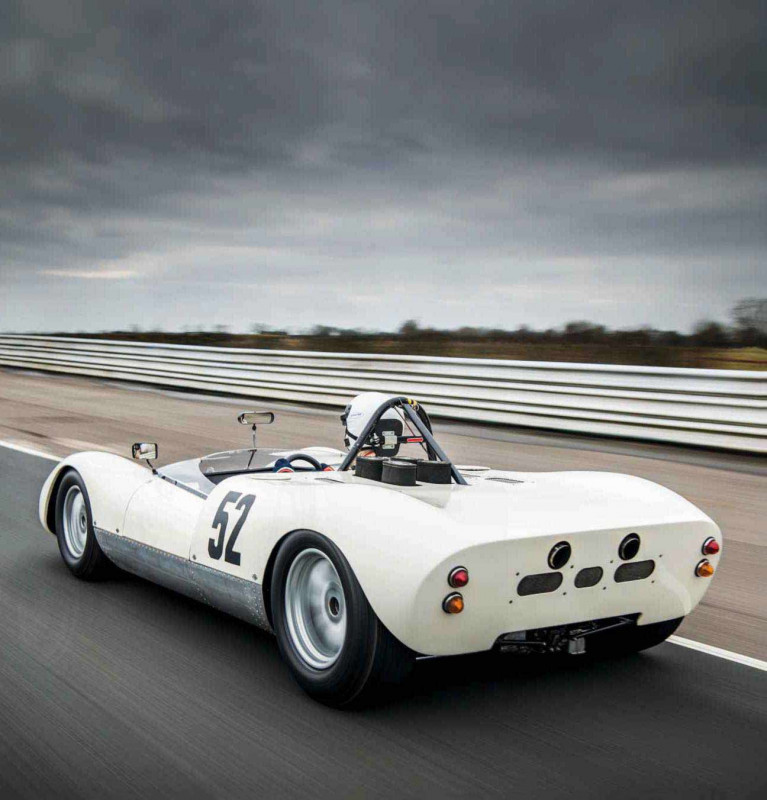
By then, Crossle had decided that building race cars was to be his life instead of farming, but if the Irish racing scene was definitely healthy — it had by then hosted more than 20 race circuits of one kind or another — home sales weren’t enough to sustain a fledgling company, even one with only one full-time employee: John Crossle himself.
'HAVING THAT MUCH MORE WALLOP AT YOUR DISPOSAL ALLOWS YOU A CERTAIN LUXURY'
Fortunately there was some convenient happenstance and, over the bleak winter of 1962-1963, John Crossle, suitably encouraged by an enthusiastic band of Irish racers — dapper Belfast Hillman importer Charles Eyre-Maunsell, businessman John L’Amie, and farmer Brian Nelson — decided to suit his Mk5 model for the emerging sports-racing category. Chapman and the others had already had similar ideas and we would soon include Brabham, Merlyn and Elva, and the mid-1960s became a golden age for sports racing with a flood of attractive mid-engined cars from a wide range of makers, many of which would end up in America. It was a development that ensured the survival of Crossle Cars, as well as promoting the name on the international stage.

The Mk5 chassis was relatively straightforward, in essence a wider version of the earlier single-seaters, as was the wishbone-and-link independent suspension, but the more extensive bodywork proved a difficult and time-consuming challenge. Like all great designers, though, Crossle had an eye for line, and the result of many hours of toil was neat and attractive, There was then the question of engines, for which the slightly greater freedom within sports car racing’s class structure offered more options: the pushrod Ford Anglia/Cortina engine in 1100 and 1500cc forms was an obvious choice; Eyre-Maunsell’s C5 was fitted with a 1558cc Lotus Twin-Cam, while L'Amie was possessed of slightly greater means and his was powered by a 1500cc Coventry Climax FPF Grand Prix engine. More were to follow.
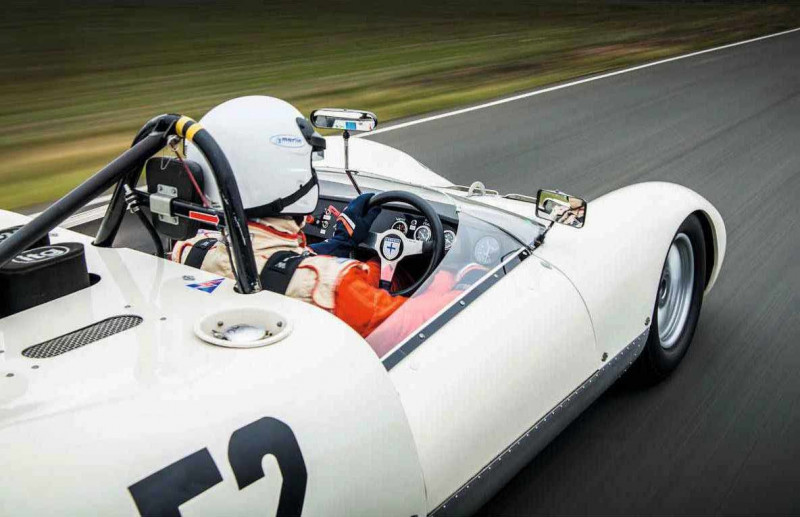
Conformity in transmission arose from the fewer options available: the four-cylinder cars were fitted with either the transaxle from a VW Beetle or the new Hewland Mk5, which used the same casing. Nelson was looking for something more powerful and took advantage of the sports car’s wider engine bay to fit the 2.5-litre V8 from a Daimler SP250 in the belief that more displacement would be an advantage. Transmissions for a larger engine were even harder to find, so he opted for a development of the Citroen Traction Avant transaxle made for John Cooper’s T53 Grand Prix car by English specialist Jack Knight. Nelson’s car is the one pictured here, built in 1964 as C5/S64/13.
The SP250 engine was designed by motorcycle doyen Edward Turner — better known for his work at Ariel and Triumph — using the design parameters of his Triumph Bonneville hemispherical head and cylinder, times eight, to push out about 140bhp in standard form, The lure of inserting readily available easy horsepower from a larger engine with more cylinders into a smaller car would become a familiar theme for builders of ‘specials’; meanwhile Chapman used a Buick V8 for his Lotus 19 and, over the sea, Carroll Shelby fitted the Ford Falcon V8 in the Cooper Monaco to create the King Cobra.
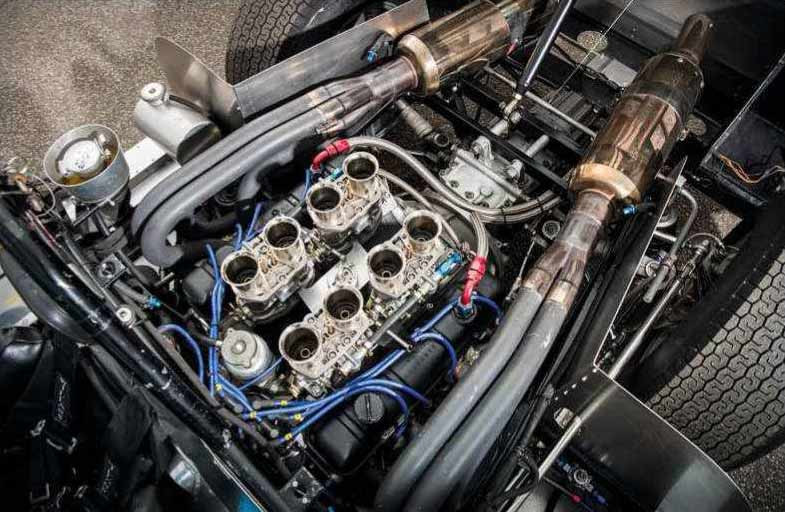
For Nelson and Crossle, the Daimler engine in theory seemed a sensible option, plus it didn’t have to come from America. It was heavier than a Ford four though, despite its all-aluminium construction; put that plus a heavier gearbox in the same place as smaller ones for which the car was designed, and balance is inevitably compromised. A wider engine also occupies space that might be used for tubes that triangulate and stiffen the chassis, There were no readily available tuning parts either, other than the obligatory row of downdraught Weber carburettors and some camshafts — ironically from America — that proved difficult to fit, so the potential of the Daimler’s extra capacity was never realised. ‘I thought it had enough power, then found it didn’t,’ says Nelson. ‘I soon realised that maybe it wasn’t such a good idea.’
Nelson raced the C5-Daimler with limited success and at the end of 1965 he sent the car back to Crossle to be widened and updated to Mk7 spec, using the 2.0-litre single-cam BMW engine that was about to launch in the new-for-’1966 2002 model. Easy to tune and reliable, the BMW is still a staple in today’s 2.0-litre Historic classes, as is the Hewland FT200 five- speed transaxle, which was also new for 1966. John L’Amie lent Nelson an engine for the bigger events but, soon afterwards, Nelson ran out of money — ‘it was either a new combine harvester, or the race car’. At the close of the ’1966 season, his C5/C7 was sold to Belfast architect Michael Martin, who installed a twin-cam.
These were busy times both for Irish racers and for Crossle. For the C7, in addition to the BMW and four-cylinder Fords, the motive options then included the 3.5-litre aluminium Buick/Oldsmobile V8 and the 4.2-litre iron Ford V8 from the Falcon, with either the Knight Citroen gearbox, or the new Hewland HD5, or the all-synchro ZF as fitted to the GT40. Within the space of a year, though, the 7S grew sleeker and wider again for the 1966 season to become the 9S, which was predominantly BMW-powered with the Hewland FT gearbox.
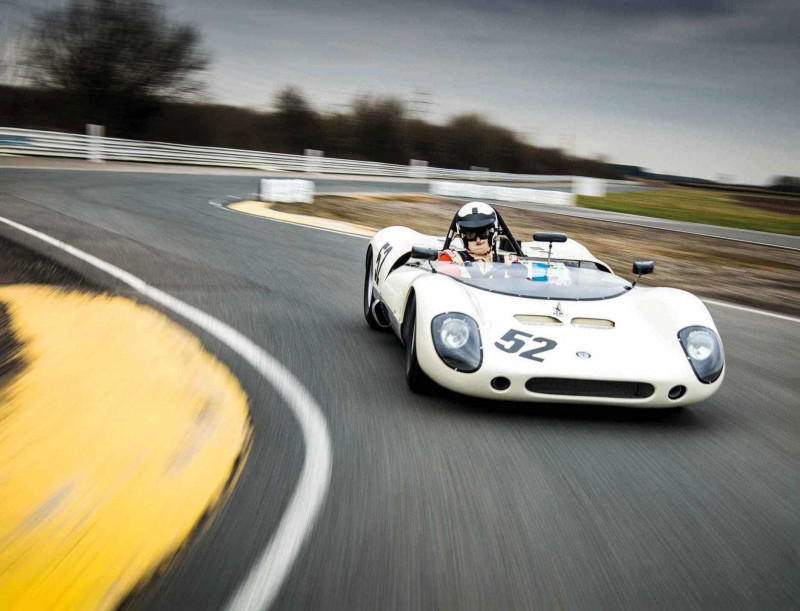
For Crossle, as with many others, the flirtation with a big engine as a straight-swap option to a smaller one had been intense but was consigned to history. How many C5s and 7s were completely new and how many were updated is hard to say — as one noted restorer says, not much of that kind of detail was written down, The likes of L’Amie were able to buy new models as soon as they became available; lesser means ensured Nelson’s car became the factory development mule, morphing from one model to the next.
For the loyal Irish racers, Crossle had become a home-grown source of excellence that could be taken across the water to have a crack at bigger events such as the Guards Trophy, where there was more money and more prestige than could be found in local Formula Libre, Three of the sports models travelled further abroad to Montlhery near Paris, in 1965, one of them Climax-engined, one Ford V8-powered and one with a twin-cam, but the V8 car was the only one to finish, The Hon Mervyn Wingfield took second place, thereby establishing the V8 option’s International racing provenance.
Nelson’s original Daimler-engined C5-7S ended up in America via Sweden, where it acquired a Buick 215ci/3.5-litre V8 engine and ZF five-speed GT40 gearbox, each a previous factory option — and the Crossle retained that specification for many years. It was then brought back to England in the Noughties, where it was converted to Ford V8 spec by Historic racer Neil Davis, thereby gaining the all-important pre-’1966 period FIA approval for the larger engine.
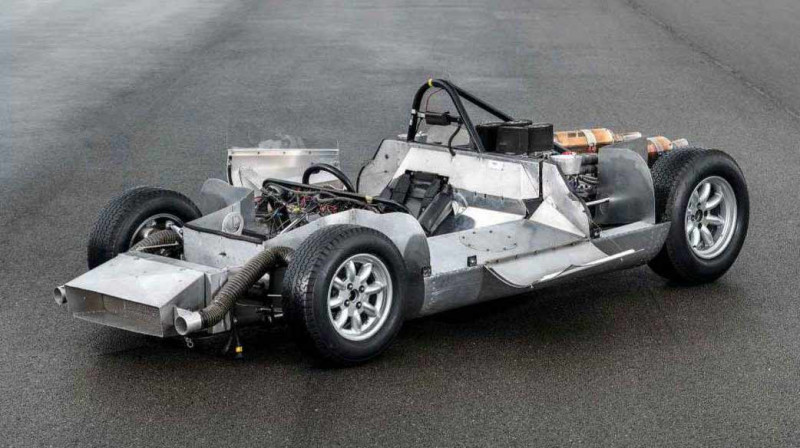
Yours truly attempted to race it at Goodwood several times, where it was usually hobbled by gearbox and engine issues, but the only time it wasn’t, I had a misunderstanding at the chicane with a left-hand-drive GT40, the driver of which didn’t see me, and endured a very public televised assault on the polystyrene, The car was something of a handful round the rest of the lap.
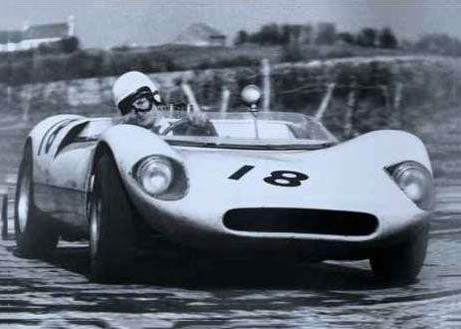
As recent restorer Sam Wilson says, the centre of gravity was about the middle of the Ford’s block, which is to say a long way back for a small mid-engined car, and the wheels and tyres were also pretty light for the weight and power. Perhaps I’d have been happier with a twin-cam and Hewland, just as John Crossle intended, but then it wouldn’t have featured in Goodwood’s Whitsun Trophy because it didn’t have a V8. The choice of power, though, was made at a time when everybody didn’t know what they shouldn’t do, and more was very seductive.
But what of now, some 50-odd years up the road? Well, during its ownership by eminent Irish cancer surgeon John Monson, who lives and works in America, it morphed yet again, back to the Buick 215ci aluminium V8 engine — the one that spawned the Rover V8 that became the UK special builder’s ready source of horsepower for so many years. It’s also in the specification C5/S64/13 affected for most of its life, and the choice for which Irish racer Jim Hughes opted in the back of his 7S back in 1965.
Wilson says the Buick weighs 80kg less than the Ford V8 and puts the centre of gravity back around the driver’s seat, and that, ideally, it should be mated with a Hewland HD5 transaxle like Hughes’ car — but the current transmission is the ZF five-speed, I suspect because it was already there. Since Crossle also offered the ZF at the time, the FIA is sensible about alternatives provided they are from period.
Clockwise, from above Brian Nelson in the C5 in 1964; driver sits exposed, ahead of the V8 engine; interior is typically minimalist.
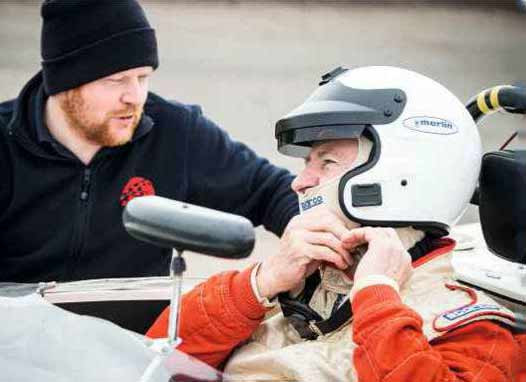
The bodywork opens up to reveal time-honoured tube-frame tradition, and a simple double-wishbone front suspension layout that worked for almost everybody. As Sam Wilson says, the front is ‘really nice’, while the rear has a couple of compromises to accommodate the engine — using that as a stressed part of the chassis was easier with the smaller fours, less so a V8 because of the width of the vee. That said, it does look as if it’s meant to be there, rather than having been shoehorned in. All up, the C5-7S V8 weighs about 650kg, or not very much, and the engine — from Buick/Rover specialist John Eales — may have grown a little from its original 215cu/3.5 litres, and these days pushes out close to 400bhp, or similar to the Ford V8’s output.
That’s a lot in a small, lightweight car. body and chassis are very shallow, which makes the body appear longer and sleeker, and there’s no doubt a Crossle C5-7S is very nice to look at, but it feels as if there’s a lot of me exposed to the thrash of slipstream. And, not for the first time, a vestigial lay-back seat doesn’t hold me or especially my shoulders, despite full-harness belts that it wouldn’t have featured in period — and which pull the shoulders down, rather than back. Could probably be tweaked a bit to suit, and all less of a problem if you’re a bit smaller.
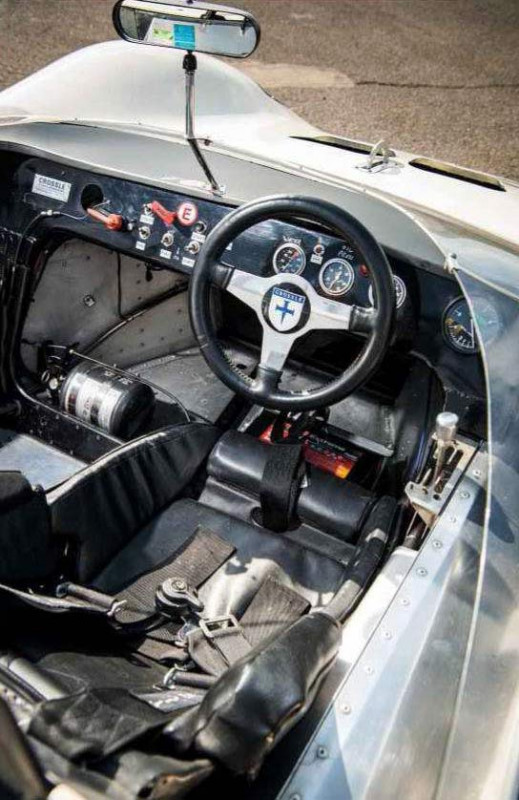
The Buick engine fires easily and is beautifully smooth, much more so than the bigger iron Ford, which had a slightly jagged feel. And the gearchange is now very sweet — not as quick as a Hewland, which is mechanically precise like cocking a gun; instead it’s more like a modern road car’s shift. Rebuilding the synchro ZF ’box is something of an art, and this is one of the nicest I’ve tried. All of it combines to shrink Blytons narrower confines to the point where I have to force myself to plant the gas — that and the Buick’s ability to leave black lines on the exit of most corners. Do it a touch too early and it gets very busy.
It’s breathlessly exciting and, with a couple of laps done, actually not that difficult, but I did feel that a more modern, much stiffer set-up had pushed the car a bit too close to the ground and made it less compliant. Study the period pictures and you see more daylight above the tyres, and more body roll, which allowed the drivers to move the weight about to make the car turn or drive. Now you have to force it in early and on the brakes, hoping you don’t take too much in and lock up or wash the front, get it pointing straight and then fire it out. It’s an easier method because the mid-corner speed is less, and you’re less likely to have the car at a big angle, but it’s not so much fun, in my opinion, and it’s not how they were.
Goodwood rivals such as the Lola T70 and McLaren M1 had grown half as big again in just a couple of years, larger dimensions directing the mass across bigger wheels, tyres and brakes to bring benefits reflected in the lap times, They also fetch five times as much money. Having that much more wallop at your disposal allows you a certain luxury, which is what Nelson was after with his Daimler engine, Hughes with the Buick, Wingfield the Ford V8 and so on. Tellingly, Formula Ford champion Cameron Jackson drove the Crossle to victory at the 2019 Goodwood Members’ meeting against a couple of GT40s and several Lotus 23s.
So, having thought that I’d have been happier with a Twin-Cam and a small Hewland, now I’m not so sure, The Buick inevitably dominates here, but it’s lighter than the Ford V8 and much nicer to use, and, as the man said, there’s never been any substitute for grunt and never will be. The Crossle V8 remains a brief but interesting interval in the development of sports car racing, and it wasn’t finished at the time, mainly because the game moved on, but the unique perspective of modern Historic motorsport means at least you can see where it was heading.
THANKS TO Sam Hancock, samhancock.com, where the car is for sale
‘THE LURE OF INSERTING A LARGER ENGINE WITH MORE CYLINDERS INTO A SMALLER CAR WOULD BECOME A FAMILIAR THEME’
TECHNICAL DATA 1964 Crossle C5-7S V8
- Engine 4600cc pushrod OHVV8, aluminium block and heads, four dual-choke downdraught Weber carburettors
- Max Power 390bhp @ 6500rpm (approx)
- Max Torque 350lb ft @ 4800rpm (approx)
- Transmission Five-speed synchromesh transaxle, rear-wheel drive
- Steering Rack and pinion
- Suspension Front: double wishbones, coil springs, telescopic dampers. Rear: transverse links, radius rods, coil springs, telescopic dampers
- Brakes All round Discs
- Weight 669kg
- Top speed 175mph or more, dependent on gearing
Above, below and bottom left Restorer Sam Wilson looks on as Hales gets ready to drive; Crossle stripped to reveal its aluminium-panelled spaceframe structure; Buick V8 became a British staple.
Right Crossle was designed for lightweight four-cylinder power but evolved around a V8, in which form it works extremely well.


